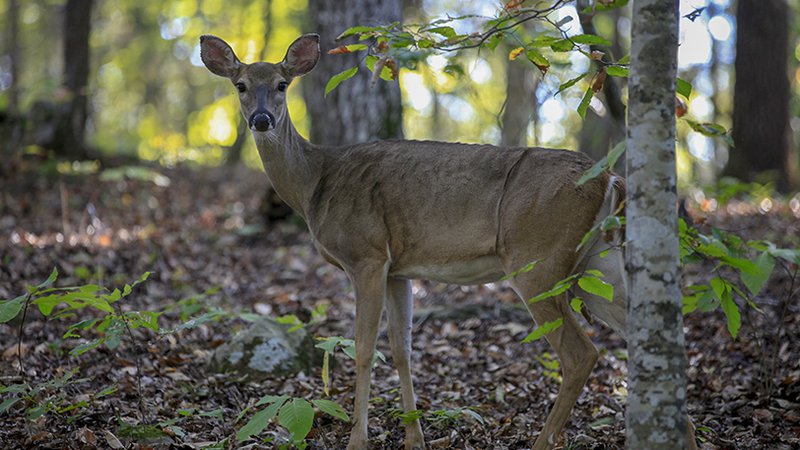CWD-positive deer found in Johnson County
ON 10-30-2018

Oct. 30, 2018
Keith Stephens
Chief of Communications
CLARKSVILLE – Chronic wasting disease has been found in Johnson County. A hunter-harvested white-tailed deer harvested north of Clarksville recently tested positive for the disease, according to the Arkansas Game and Fish Commission.
The 2½-year-old buck was confirmed as CWD-positive by the Wisconsin Veterinary Diagnostic Laboratory in Madison.
Johnson County was previously placed within the CWD management zone after deer tested positive in surrounding counties. This latest detection will not add any counties to that CWD zone. The CWD management zone includes Benton, Boone, Carroll, Crawford, Franklin, Johnson, Logan, Madison, Marion, Newton, Pope, Searcy, Sebastian, Van Buren, Washington and Yell counties.
CWD was first detected in Arkansas Feb. 23, 2016, when a hunter-harvested elk in Newton County tested positive. The first Arkansas deer with CWD was verified March 3, 2016, also in Newton County. Since the first detections, AGFC has sampled and tested over 10,000 deer and elk from around the state. To date, there have been 391 deer and elk have tested positive for the disease in Arkansas.
CWD was first documented among captive mule deer in Colorado in 1967, and has been detected in 24 states and three Canadian provinces. It’s been found in the wild in 20 states and among captive cervids in 15 states.
The Commission has taken several steps to prevent the disease, which strikes cervids (deer, elk and moose), from entering the state. A moratorium on live cervid importation began in 2002, and the importation of cervid carcasses was banned in 2005. Moratoriums on permits for commercial hunting resorts and breeder/dealer permits for cervid facilities were put in place in 2006. Capturing white-tailed deer by hand was banned in 2012.
Biologists believe a protein particle called a prion is transmitted through feces, urine and saliva, and can survive for years in soil and plants. CWD can have an incubation period of at least 16 months, which means infected animals may not show symptoms immediately.
CWD affects an animal’s nervous system. Prions transform normal cellular proteins into abnormal shapes that accumulate until neural cells cease to function. Infected animals begin to lose weight, lose their appetite and develop an insatiable thirst. They tend to separate from their herds, walk in repetitive patterns, carry their head low, salivate, urinate frequently and grind their teeth.
Visit www.agfc.com/cwd for more information.
Recent News

Schoenrock chosen to lead AGFC
Apr. 21, 2025

AGFC Commissioner Meeting Notice
Apr. 21, 2025
Subscribe to Our Weekly Newsletter E-mails
Don’t miss another issue. Sign up now to receive the AGFC Wildlife Weekly Newsletter in your mailbox every Wednesday afternoon (Waterfowl Reports are published weekly during waterfowl season and periodically outside the season). Fishing Reports arrive on Thursdays. Fill in the following fields and hit submit. Thanks, and welcome!
